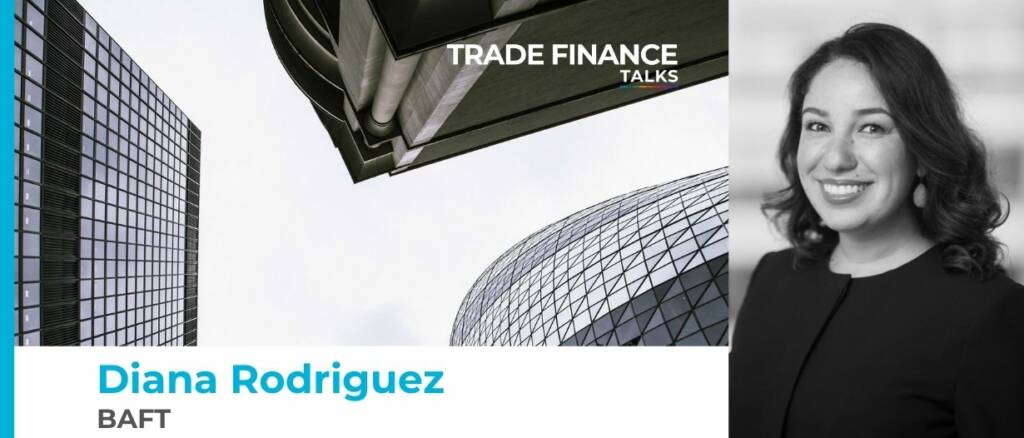Come the end of 2021, the London Interbank Offered Rate (LIBOR) – the reference interest rate for millions of financial contracts worldwide worth more than USD$240 trillion– will cease to be in use. This is set to have significant implications for trade finance, and banks need to ensure they are fully prepared for the transition and what lies ahead.
LIBOR, established in the 1980s, is the most common benchmark interest rate index used by banks across the world, including, of course, for trade finance loans. LIBOR is used to determine a daily interest rate for seven borrowing periods ranging from overnight to one year, and five currencies: USD, EUR, GBP, JPY, CHF. Changes are underway that will affect all of these currencies, as well as other Interbank Offered Rates (IBORs) besides LIBOR, including EURIBOR and EONIA. But for those undertaking trade finance, as the majority of transactions are denominated in USD, it changes to the USD element of LIBOR that will have by far the biggest impact.
The need for change
With the reputation of LIBOR questioned following reports of manipulation, combined with the fact that volumes of interbank unsecured term borrowing – the basis for LIBOR – have significantly reduced since the global financial crisis, regulators have been prompted to develop more robust “risk-free rates” (RFRs) to replace LIBOR and enhance the integrity and reliability of the benchmarks used.
The RFR that will replace the USD element of LIBOR is the Secured Overnight Financing Rate (SOFR). By the beginning of 2022, all dollar-denominated trade finance loans will reference this new rate.
| IBOR | RFR successor |
| USD LIBOR | SOFR |
| EUR LIBOR | €STR |
| GBP LIBOR | SONIA |
| JPY LIBOR | TONA |
| CHF LIBOR | SARON |
| EONIA (Europe) | €STR + 8.5bps |
| CDOR (Canada) | CORRA |
| HIBOR (Hong Kong) | HONIA |
| BBSW (Australia) | RBA Cash Rate (AONIA) |
| EURIBOR (Europe) | n/a (but will have a new administrator) |
| TIBOR (Japan) | n/a |
While LIBOR and SOFR both represent short-term borrowing costs, there are important variations to consider. Firstly, unlike LIBOR rates, which were partially determined by rates submitted by banks, RFRs are calculated purely using historical transaction data. Secondly, whereas LIBOR was an unsecured term rate used to calculate seven different maturity rates daily, SOFR is just one daily, secured overnight rate. Thirdly, in contrast to LIBOR, where loans are forward-looking (taking into account potential future interest rates) – meaning borrowers have greater certainty over future liabilities and can therefore manage cash flows more easily – borrowers taking out SOFR loans will effectively not know exactly how much interest they owe until they are required to pay. Furthermore, as LIBOR represents the average cost of borrowing by a bank, it reflects interbank credit risk and term/liquidity premiums, but because SOFR is calculated using actual transactions in repurchase agreements versus US Treasury bonds, it represents a “risk-free” rate.
These differences are presenting considerable challenges for banks to address.
A challenging landscape
In the new landscape, a range of significant adjustments will need to be made, factoring in areas such as technology upgrades, model recalibration, and contracts and fallback language.
Banks, therefore, need to evaluate the scope of changes that need to be made to ensure they are positioned to facilitate transactions effectively once LIBOR disappears. If the term of a loan extends beyond 2021, that loan will no longer be subject to LIBOR rates.
For loans being documented now, banks need to think about agreement wording to take into account LIBOR ending, and avoid writing new LIBOR contracts. In the case of existing loan deals, identifying exposure to LIBOR is key. Contracts that reference USD LIBOR can’t simply be “swapped” with SOFR – at least not without appropriate adjustments. Banks may be required to renegotiate contracts, and repaper if wording refers only to LIBOR, and not any alternative rates.
Further complications could arise regarding fallback language – which refers to the contractual provisions that identify and guide the implementation of replacement rates – as this can be inconsistent across products and institutions and vary significantly even within the same product sets. Additionally, existing contractual fallback language was originally intended to address temporary unavailability of LIBOR, not its permanent discontinuation. This is one example of how the transition could produce unintended results that could dramatically affect the structure of a bank’s products.
One of the most challenging issues for banks is that, unlike LIBOR – which enables a daily interest rate to be calculated for different borrowing periods – SOFR will require a daily compound to be calculated on an overnight basis. As a result, calculating the interest rate for longer-term loans will be particularly complex. For example, for a 360-day loan, the daily compound interest will need to be calculated 360 times.
The overnight rate structure also means that, unlike LIBOR, rates cannot be calculated in advance. This creates issues with respect to establishing discount rates – a fundamental challenge that banks will need to address. This also applies to risk premium calculations. Taking a 360-day exposure but only applying an overnight rate could result in some banks adding a premium to compensate. Again, however, that rate could not be calculated in advance for SOFR, meaning it is likely that many banks applying dollar-denominated loans via LIBOR replaced by SOFR may have a different base rate.
It is also important to recognise that, with LIBOR always typically slightly higher than overnight index swaps, SOFR will likely invariably be lower than LIBOR. This spread must be accounted for when substituting LIBOR with SOFR. This might fundamentally change business considerations for individual transactions.
Certainly, the impact of the move to SOFR interest rates on trade finance is immense. Banks are facing the challenge of determining LIBOR exposure, building spread and term structure on par with LIBOR, and efficiently managing the transition across different risk areas. As they do so, they face increasing costs. For example, data from Oliver Wyman shows that 14 of the world’s top banks expect to spend more than US$1.2 billion on the LIBOR transition, with the costs for the finance industry as a whole set to be several multiples of that sum.
Getting “SOFR ready”
With the deadline fast approaching, banks need to ensure they are fully prepared. Banks should consider establishing a dedicated team to oversee and successfully implement the transition. We have appointed experts to ensure we comply and are effectively positioned to facilitate transactions smoothly for clients. With new interest calculation methods required for SOFR, operational and technology applications will need to be adjusted to absorb the new methodologies. Indeed, implementing changes to IT systems is likely to be the biggest investment for banks in preparation for the migration.
Elsewhere, it is important that correspondent banks are on the same page – particularly in relation to LIBOR reset loans. Banks need to ensure that all partner banks are unified in their adopted approach and that when LIBOR disappears, loans aren’t maturing with a reset agreement and trade can continue to flow effectively.
With many banks yet to fully prepare and given the scope of the impact, planning for the transition must start now with a comprehensive strategy. Critical steps include monitoring the impacts across business lines, identifying existing financial instruments and contracts that may be affected and implementing information technology systems, models and analytics to prepare for a smooth transition to the alternative reference rates.
The move away from LIBOR will cause significant disruption to an industry already facing a challenging environment. Banks need to ensure they are fully prepared for what lies ahead.
The views expressed herein are those of the author only and may not reflect the views of BNY Mellon. This does not constitute Treasury Services advice, or any other business or legal advice, and it should not be relied upon as such.































